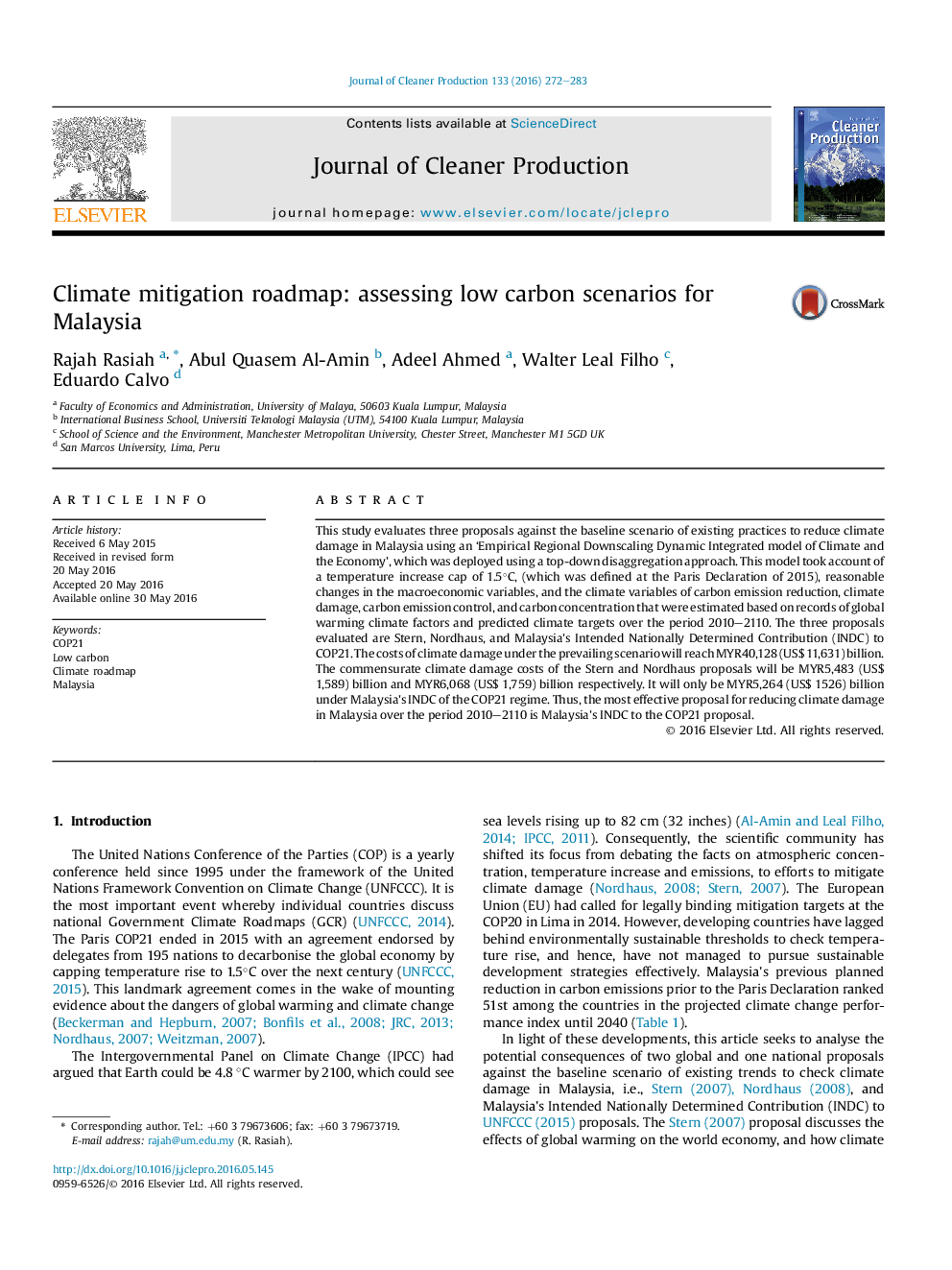| Article ID | Journal | Published Year | Pages | File Type |
|---|---|---|---|---|
| 8101531 | Journal of Cleaner Production | 2016 | 12 Pages |
Abstract
This study evaluates three proposals against the baseline scenario of existing practices to reduce climate damage in Malaysia using an 'Empirical Regional Downscaling Dynamic Integrated model of Climate and the Economy', which was deployed using a top-down disaggregation approach. This model took account of a temperature increase cap of 1.5°C, (which was defined at the Paris Declaration of 2015), reasonable changes in the macroeconomic variables, and the climate variables of carbon emission reduction, climate damage, carbon emission control, and carbon concentration that were estimated based on records of global warming climate factors and predicted climate targets over the period 2010-2110. The three proposals evaluated are Stern, Nordhaus, and Malaysia's Intended Nationally Determined Contribution (INDC) to COP21. The costs of climate damage under the prevailing scenario will reach MYR40,128 (US$ 11,631) billion. The commensurate climate damage costs of the Stern and Nordhaus proposals will be MYR5,483 (US$ 1,589) billion and MYR6,068 (US$ 1,759) billion respectively. It will only be MYR5,264 (US$ 1526) billion under Malaysia's INDC of the COP21 regime. Thus, the most effective proposal for reducing climate damage in Malaysia over the period 2010-2110 is Malaysia's INDC to the COP21 proposal.
Keywords
Related Topics
Physical Sciences and Engineering
Energy
Renewable Energy, Sustainability and the Environment
Authors
Rajah Rasiah, Abul Quasem Al-Amin, Adeel Ahmed, Walter Leal Filho, Eduardo Calvo,
